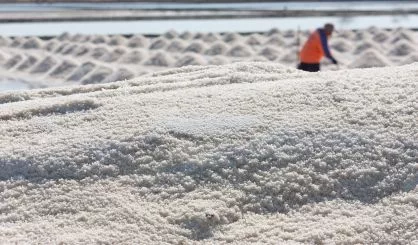
The Southwest Michigan Planning Commission is asking everyone to be mindful of how they use salt to get rid of ice and snow in the winter. Associated planner Kris Martin tells us it only takes one teaspoon of road salt to permanently pollute five gallons of water, and once in the water, there’s no way to remove the chloride. At high concentrations, chloride can harm fish and plant life.
“You might think that just throwing salt down around your driveway or home, the salt just kind of stays there, but for a lot of people who might live in town where there’s a storm drain, most of that salt after the application, if too much has been applied, it simply washes into the storm sewers,” Martin said. “Most of those sanitary sewers directly flow into our lakes and streams and they’re not treated at all.”
Therefore, Martin says less is more when it comes to applying road salt and he advises using sand when possible. He notes the sand isn’t as harmful and it has last longer than salt in terms of offering traction. Martin says you can also help by giving plows plenty of space so they can apply their road salt correctly, and avoid using salt below 15 degrees when it doesn’t work anyway. He advises everyone to check out LetsKeepItBlue.org for water protection tips.








